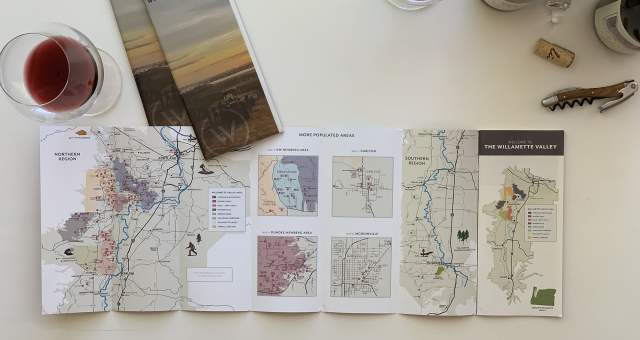By AVA
American Viticultural Areas, or AVAs, are legally designated regions that have been found to possess unique geographical and climate characteristics with direct implications for wine quality and typicity. In other words, they’re places that produce special wines. The Willamette Valley AVA is one such place—and at nearly 3.5 million acres, it’s one of the largest in the United States.
Our winemakers love Pinot noir because it’s such an expressive grape: it insists on telling you where it’s from. Variations in the Willamette Valley from site to site, such as elevation changes or the presence of nearby forests or rivers, can contribute to differences in the glass that even novice wine lovers can perceive. General attributes that make the Willamette Valley suitable for cooler-climate grape growing include the protection afforded by the Cascade Mountains to the east, Coast Range mountains to the west and a series of lower hill chains to the extreme north of the valley. Almost all grape growing is done on hillsides, avoiding deeply fertile alluvial soils where the Willamette Valley’s other important crops, like hazelnuts, thrive.
If you look at a map of the Willamette Valley, you’ll see apparent “families” of vineyards, where “nested” AVAs have already been designated within the larger AVA’s borders. In 2002, vineyard and winery owners collaborated to delineate and submit to the TTB petitions to divide much of the northern part of the large Willamette Valley AVA into six of these more specific AVAs: Chehalem Mountains, Dundee Hills, Eola-Amity Hills, McMinnville, Ribbon Ridge, and Yamhill-Carlton. Like everything in nature, it’s a work in progress: the Van Duzer Corridor AVA was approved in January 2019, the Tualatin Hills and Laurelwood District AVAs were approved in June 2020 and the Lower Long Tom AVA was established in November 2021. Mount Pisgah, Polk County, Oregon, our eleventh AVA, was established in June 2022. Read more about Willamette Valley AVAs.






